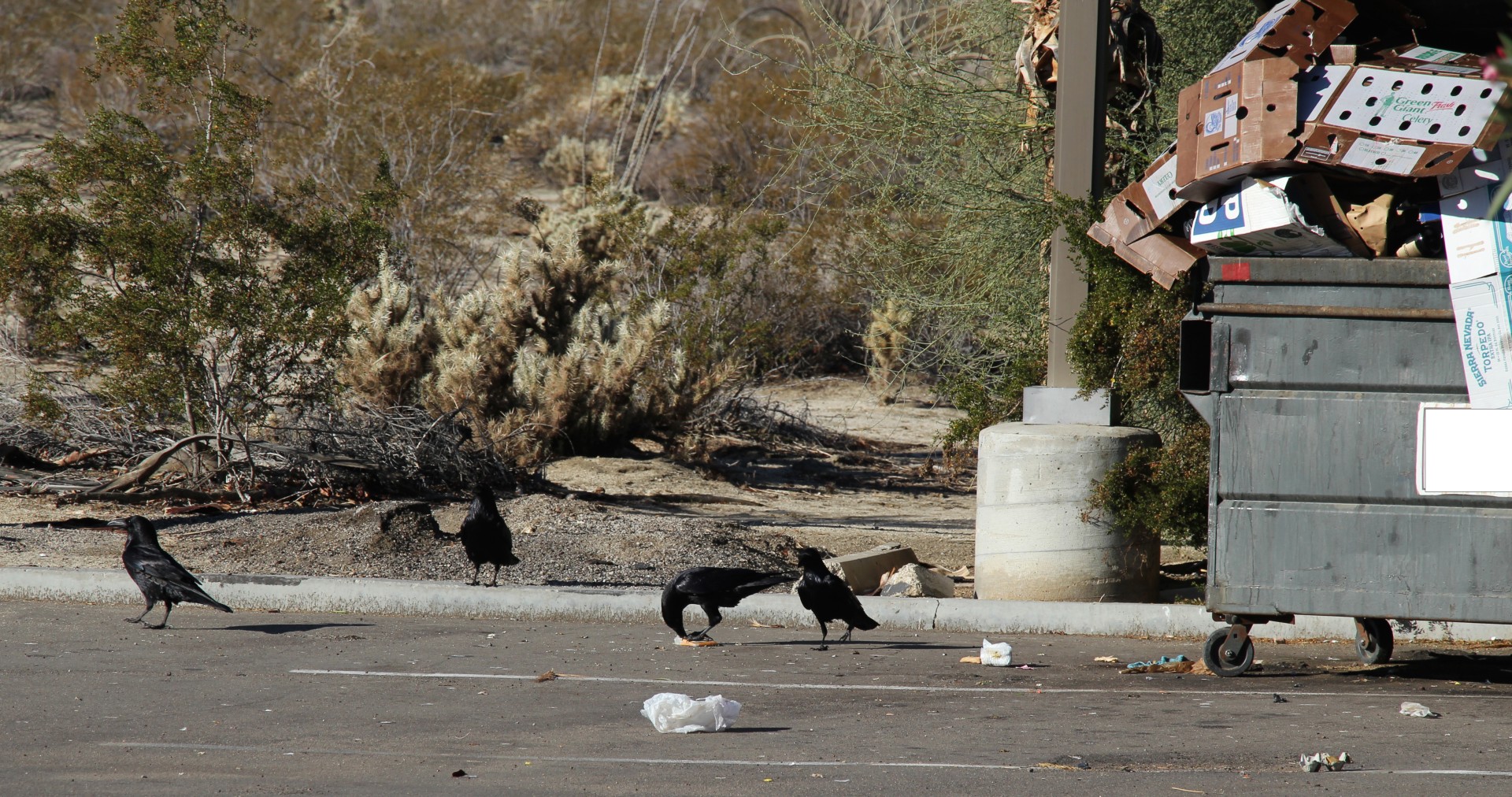Well-designed quantitative analyses provide managers with guidance to work towards maintaining sustainable wildlife populations. Such analyses include investigations of population trends, probing of novel information to fill gaps in understanding, and the exploration of consequences that arise from management actions.
Recently, conservation experts asked us to help build a mathematical tool to evaluate options to restore wildlife balance in the desert habitat in the southwestern United States. In that area, imbalances between predators and prey have widened as a result of human modifications to the landscape, such as the construction of commercial, civic, and residential developments.
For some native wildlife species such as the common raven (Corvus corax), these human developments provide a host of beneficial opportunities. New roosting and hunting perches, new sources of food scraps through discarded garbage and other litters, and new places to find water, especially in the form of aqueducts, reservoirs, wastewater treatment plants, or even the unnatural pooling of rainwater on asphalt that paved over historically porous desert soils have caused their numbers to explode.
For other native wildlife species such as the threatened desert tortoise (Gopherus agassizii), these same human developments present a variety of detrimental threats. All this new infrastructure on the landscape equates to new ways to get hit by vehicles, new places to drown, new areas to get harassed by loose pets, new fences to constrict movements or migration, and new areas to be hunted by once sparse, but now numerous, development-subsidized predators.
Given that these anthropogenic infrastructures are here to stay, our interdisciplinary team calculated the number of raven eggs and/or ravens that need to be removed from critical desert tortoise habitats to “reset” raven densities to historical levels. The mathematical tool, the StallPOPd software, allows managers to consider alternatives to restore historical predator/prey ratios while conserving both species for the benefit of future generations.
Read the full article here:
Currylow, A, B Hanley, K Holcomb, T Shields, S Boland, W Boarman, & M. Vaughn. 2022. Identifying population management strategies for avian predators: a decision tool. Human–Wildlife Interactions 15(3): https://digitalcommons.usu.edu/hwi/vol15/iss3/25/
Interactive software can be downloaded at: https://doi.org/10.7298/sk2e-0c38.4






